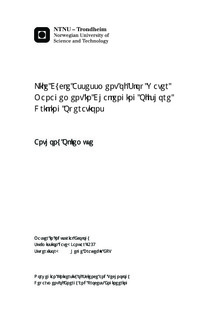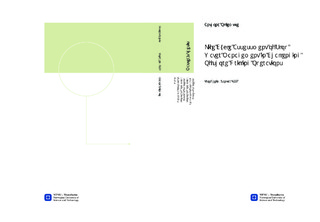| dc.description.abstract | Abstract
Offshore oil and gas drilling operations generates slop water, which are formed when wastewater originating from multiple sources becomes contaminated with drilling fluid components and have to be disposed or treated prior to discharge in compliance with local discharge regulations. The logistics and treatment of slop water have been suggested to represent a significant part of the life-cycle environmental footprint of offshore drilling operations but poorly understood due to lack of information regarding volumes, sources and technology descriptions to properly model slop waste treatment technologies with life-cycle assessment.
In this thesis, the environmental impacts of offshore injection disposal and a range of slop water treatment technology options applied offshore and onshore for the treatment of different types and volumes of slop water were evaluated using life cycle assessment (LCA). The offshore treatment technological set-ups were filtration, dissolved air flotation (DAF) and centrifuge based treatment technologies, while the onshore treatment system involves a combination of chemical and physical treatment processes. The sources, characteristics and volume estimates of slop water treated by the identified treatment technologies were described based on four wells scenarios drilled within the Norwegian continental shelf which includes a normal, deep-water, and high pressure high temperature (HPHT) well, all of which were partly drilled with an oil based mud (OBM) and an arctic well drilled using only water based mud (WBM).
The results of the study showed that offshore treatment of slop is a better alternative to offshore injection and onshore treatment with the DAF system emerging as the best alternative overall. When slop cannot be handled at source on the rig, onshore treatment will be a better alternative to offshore injection. The disposal or recycling of oil present in slop water has a significant effect on the environmental performance of the treatment systems. A comparison of the normal well with the three other well scenarios highlighted that the HPHT and deep-water have relatively higher impacts due to the high volumes of slop water generated by both wells. The significant impact contributions of logistics when slop water is sent onshore was highlighted by the deep-water and arctic well scenarios which both has the longest distance from field to shore. The arctic well scenario offshore treatment impacts were the lowest due to the use of WBM only for drilling, thereby highlighting the significant effect of OBM use on slop water treatment impacts. The benefits of using natural gas and onshore electricity (where applicable) instead of diesel as a source of energy when handling slop offshore was also demonstrated by sensitivity analysis.
The findings of this study offers new and useful information that allows for the better assessment of offshore slop water management options which also serves as a useful input in the decision objectives used by stakeholders for the overall environmental evaluation of offshore drilling activities. | |

